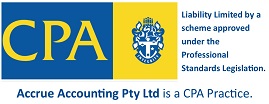Capital Gains Tax (CGT)
Capital Gains Tax (CGT) is not really a separate tax but is what you need to include on your income tax return for any net capital gain incurred in a financial year for a Capital Gains Tax event which can include compulsory acquisitions, forfeited deposits, etc. Also you may have a Capital Gain from managed funds or other units where the Capital Gain is distributed to you. You are taxed on net capital gains at your marginal tax rate. The date of acquisition and disposal is the date the contract is signed and not when it is settled, so you may have a situation where it is signed pre 30th June and goes into the current tax return even when settlement is post 30th June.
CGT is the difference between the assets cost base (what you paid for it) and your capital proceeds (what you received for it). Costs that may be included are expenses for acquisition, holding and selling such as stamp duty on purchase, legal fees, advertising, interest on borrowed monies in some circumstances, etc.
CGT assets are normally things like:-
- Shares
- Units in a trust
- Collectables (eg. jewellery, stamps, coins, etc.)
- Assets for personal use (eg. furniture or boats, etc.)
- Real Estate (eg. land, investment and holiday properties, etc.)
- Other assets (eg. forfeited rights, etc.)
The Capital Gain or Capital Loss worksheet helps you calculate a capital gain or loss for each CGT event.
Where a capital gain has been made, it can be calculated using one of these methods:
- Indexation method for capital gains made on CGT assets acquired before 21 September 1999 and owned for at least 12 months
- Discount method for assets owned for at least 12 months and for which you are not using the indexation method
- 'Other' method (if neither indexation method nor discount method applies)
These three methods of calculating a capital gain are explained in full detail in the Guide to Capital Gains Tax on the ATO website.
A capital gain is transferred to the CGT summary worksheet according to the method you used to calculate it and the type of asset that gave rise to it. This worksheet is used to calculate your entity's net capital gain or net capital loss for the income year. If the total capital gains or capital losses of your entity exceed $10,000 for the current year, a CGT schedule must be completed. The Guide to Capital Gains Tax explains how to complete the CGT schedule
There are four small business CGT concessions that may apply to asset sales. These exemptions are
- 15 year rule (business has owned asset 15yrs or over and individual is 55+, retiring or incapacitated)
- 50% active asset reduction (capital gain can be reduced by 50% on business (active) assets)
- Small business retirement exemption (capital gain exempt if individuals <55 pay exempt amount into complying super fund or retirement savings account up to lifetime limit of $500K)
- Small business roll-over (generally, deferring gain from sale of a business asset).
These concessions are outlined in the ATO CGT concessions for small business-overview and further details are available in the ATO Guide to Capital Gains Tax Concessions for small business.
FURTHER INFORMATION: see the CGT section of the guide on the ATO website.
| IMPORTANT DISCLAIMER: This article is published as a guide to clients and for their private information. This article does not constitute advice. Clients should not act solely on the basis of the material contained in this article. Items herein are general comments only and do not convey advice per se. Also changes in legislation may occur quickly. We therefore recommend that our formal advice be sought before acting in any of these areas. |






